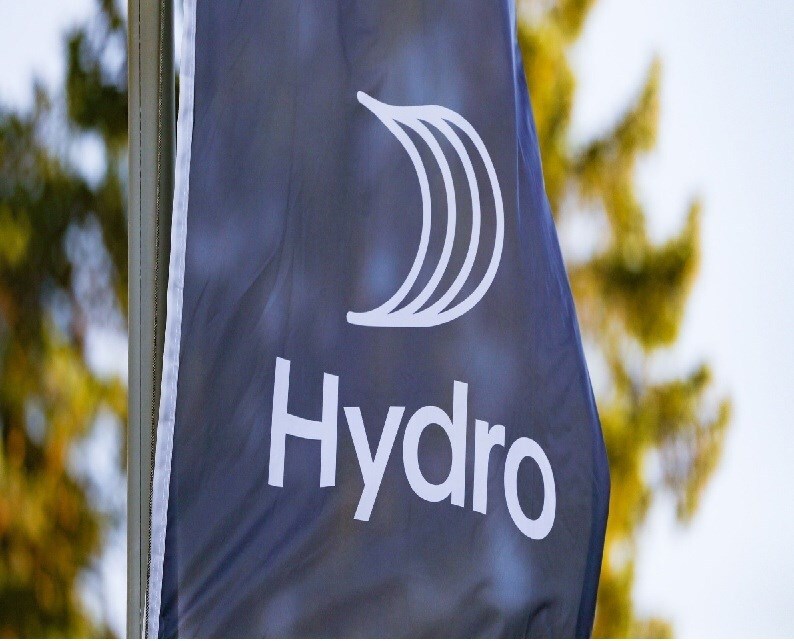

Norsk Hydro ASA delivered a steady performance in the third quarter of 2025, demonstrating resilience amid weak prices, currency headwinds, and challenging global conditions. The company posted an adjusted EBITDA of NOK 5,996 million, compared with NOK 7,367 million in the same quarter last year.

The decline was largely attributed to lower alumina prices and a stronger Norwegian krone, partly balanced by higher production and improved margins in certain segments. Hydro also generated NOK 2.2 billion in free cash flow, with its twelve-month adjusted return on average capital employed (RoaCE) at 11 per cent.
Financial overview
Quarter-on-quarter, adjusted EBITDA fell from NOK 7,790 million, reflecting lower aluminium price realisation and currency pressure. However, these effects were partly cushioned by lower input costs. Net income for the period came in at NOK 2,149 million, influenced by a NOK 206 million unrealized derivative loss and a NOK 66 million foreign exchange gain from risk management instruments.
The results also included NOK 116 million in rationalisation costs and compensation related to a terminated power contract, while adjusted foreign exchange gains totaled NOK 381 million.
Hydro’s net debt declined to NOK 13.6 billion from NOK 15.5 billion, supported by cash generation from operations. Adjusted net debt also dropped to NOK 21.1 billion, reflecting reduced borrowings and minor changes in hedging collateral.
Segment performance
Bauxite & Alumina:
Earnings for the segment fell sharply to NOK 1,290 million from NOK 3,410 million in the third quarter of last year. The decline was mainly due to weaker alumina prices, currency impacts from the BRL/USD exchange rate, and higher fixed costs. These were partly offset by stronger sales volumes and the positive effect of the ongoing fuel switch project at the Alunorte refinery, replacing fuel oil with natural gas.
Energy:
Adjusted EBITDA rose to NOK 828 million from NOK 626 million, helped by stronger price area gains despite lower hydropower generation.
Aluminium Metal:
Earnings dropped to NOK 2,732 million from NOK 3,234 million, mainly due to an unfavourable USD/NOK exchange rate. Higher sales volumes and lower alumina costs offered partial relief. Global primary aluminium demand remained flat year-on-year, with growth in China offsetting a 1.8 per cent contraction in demand outside China. LME prices averaged higher through the quarter, ending at USD 2,681 per tonne.
Metal Markets:
Results declined to NOK 154 million from NOK 277 million, as weaker trading performance offset better margins from recycling activities.
Extrusions:
The segment saw stronger results, with EBITDA rising to NOK 1,107 million from NOK 879 million. Cost efficiencies, higher volumes, and the benefit of a rising U.S. Midwest premium supported performance despite tight margins.
Also read: The World of Aluminium Extrusions – Industry Forecast to 2032
In Europe, extrusion demand was broadly stable year-on-year but fell 20 per cent from Q2 due to seasonality. Building, construction, and industrial demand remained subdued but showed signs of recovery in order intake. Automotive demand weakened slightly, though electric vehicle production continued to rise. In North America, demand increased 2 per cent from last year but slipped 2 per cent from the previous quarter, with transport and automotive segments under pressure, partly offset by gains in construction and industrial sectors.
Strategic developments
In June, Hydro launched a strategic workforce and cost reduction programme aimed at improving competitiveness and simplifying its structure. The initiative involves reducing around 750 white-collar positions, including 600 in 2025 and 150 in 2026 through natural attrition. The programme carries a gross redundancy cost of NOK 400 million, resulting in a net cost of NOK 150 million for 2025, with expected annual savings of NOK 1 billion from 2026.
These measures complement Hydro’s ongoing NOK 6.5 billion improvement programme and reduced 2025 capex forecast. CEO Eivind Kallevik said the move strengthens Hydro’s ability to adapt to an unpredictable market environment while maintaining key resources critical to future growth.
Hydro also advanced its long-term renewable energy strategy. Its joint venture smelter Alouette reached an Agreement in Principle (AiP) with the Government of Québec and Hydro-Québec to secure renewable power supply for 2030–2045, ensuring stable energy access and reinforcing Alouette’s status as the largest aluminium smelter in the Americas.
Portfolio adjustments and legal resolution
Continuing its shift away from battery operations, Hydro exchanged its shares in Lithium de France for a 6 per cent stake in Arverne Group and agreed to sell its entire interest in Corvus Energy for USD 30 million, with the transaction expected to close in early November.
In a significant legal outcome, the Rotterdam court dismissed all claims filed by Brazilian group Cainquiama and others against Hydro related to alleged pollution from Alunorte during 2018. The court ruled in Hydro’s favor, concluding based on extensive evidence that no overflow occurred from the bauxite residue deposits and that the environment suffered no damage.
Sustainability and partnerships
Hydro continued advancing low-carbon aluminium initiatives through key collaborations. Its partnership with Mercedes-Benz produced visible results this year with the launch of the new electric CLA, which features Hydro’s REDUXA 3.0 aluminium from the Årdal smelter.
The company also showcased circular innovation with the Hangarbrua pedestrian bridge in Trondheim, constructed using recycled aluminium from the decommissioned Gyda oil platform. The project demonstrates how recovered offshore materials can be transformed into lightweight, durable infrastructure with minimal carbon impact.
Market conditions and outlook
The global alumina market softened through the quarter, with PAX prices declining to USD 321 per tonne from USD 358, mainly due to oversupply in China and steady demand. The suspension of bauxite mining licenses in Guinea curbed exports to China, ending the price decline seen earlier in the year.
Hydro remains focused on cost discipline, renewable energy access, and expanding its low-carbon aluminium portfolio. The company’s solid financial position and operational flexibility leave it well placed to navigate ongoing market volatility and deliver sustainable long-term growth.
Responses








